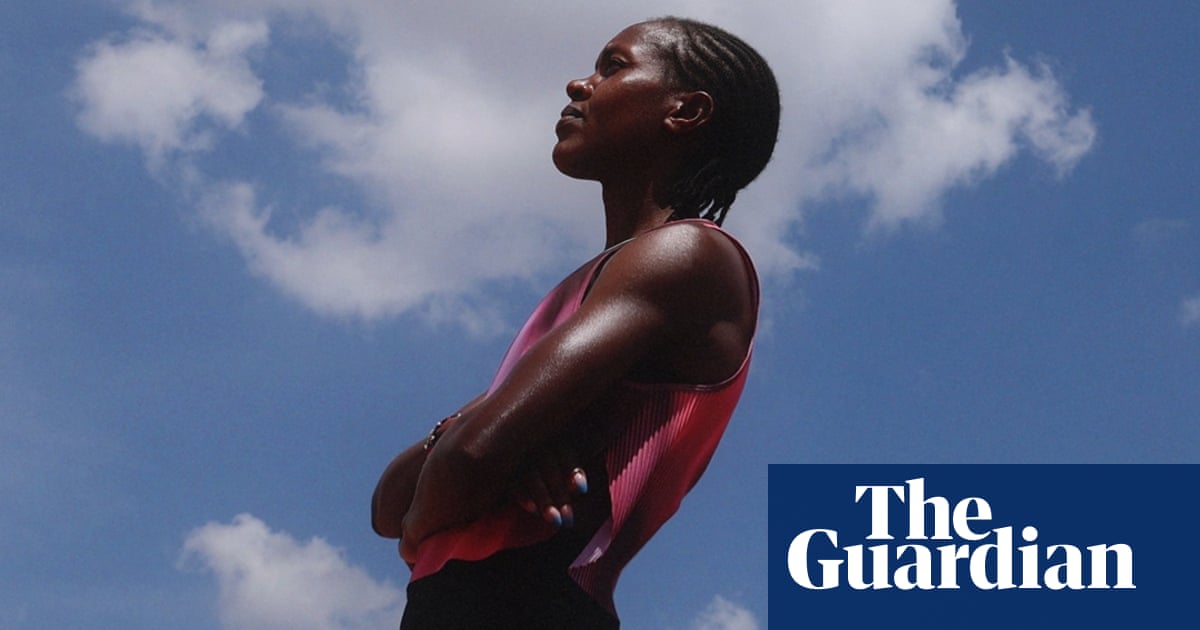It remains one of the most enduring images in the history of sport: Sir Roger Bannister collapsing at the finish after becoming the first person to shatter the four-minute-mile barrier. Since that day in 1954, when Bannister achieved a feat many had thought was impossible, just over 2,000 others have followed in his footsteps – all of them men.
But the pages of history could soon be freshly rewritten after the Olympic 1500m champion, Faith Kipyegon, and her sponsorsNike, announced plans “to make the impossible possible” again by becoming the first woman to run a sub-four-minute mile this summer.
The Kenyan, who is widely regarded as the greatest female middle-distance runner of all time, holds the mile record of 4min 07.64sec. And while cutting nearly eight seconds off that mark would appear to be extraordinarily difficult, she will be armed with the next generation of super shoes and the assistance of male pacers to help her achieve her goal.
“I’m a three-time Olympic champion. I’ve achieved world championship titles,” said Kipyegon. “I thought: ‘What else? Why not dream outside the box?’ And I told myself: ‘If you believe in yourself, and your team believes in you, you can do it.’”
“I want this attempt to say to women: ‘You can dream and make your dreams valid,’” added the 31-year-old, who will make her attempt at the milestone on 26 June at the Stade Charléty in Paris. “This is the way to go as women, to push boundaries and dream big.”
Nike is calling her attempt Faith Kipyegon vs the 4-Minute Mile and while most experts believe she is up against it, the US sportswear brand does have form when it comes to what it calls “moonshots”.
In 2017 there was also considerable scepticism when Nike announced that another Kenyan, Eliud Kipchoge, would attempt “breaking two” – to run a marathon in under two hours at the Monza Formula One race track.
And while hefell just shorton that occasion, two years later he went on torun 1:59.40 in Vienna– albeit in an event that did not count under World Athletics rules as he used 40 pacemakers, who subbed in and out of the run to help him draft and reduce wind resistance.
Kipyegon will adopt similar tactics for her attempt, with a recent scientific paper suggesting that she “could run 3:59.37 with drafting provided by one pacer in front and one in back who change out with two other pacers at 800m”.
Further help will come in the form of the next generation of super shoes, which are currently being tested by Nike athletes. As Trevor Painter, coach of the Olympic 800m gold medallist Keely Hodgkinson, told the Guardian: “Nike’s tech team came out to South Africa earlier this year to show us samples of what’s to come. Next year there’s a new shoe coming out which is like: ‘Wow, this is a bit of space age.’ It will shave tenths off track times, no doubt.”
Still, the challenges Kipyegon faces are considerable. Typically an athlete has to be capable of running an 800m in 1.52 or 1.53 to run under four minutes for a mile, while the Kenyan’s personal best is 1.57. Even with better shoes and better drafting, she needs to cut a substantial amount of time. It makes it look less like a moonshot and more like trying to make it to Mars.
Sign up toThe Recap
The best of our sports journalism from the past seven days and a heads-up on the weekend’s action
after newsletter promotion
However, Kipyegon is training at altitude in Kenya, where she is running 300 metre repeats at 43 seconds, in an attempt to prove the doubters wrong. “She is convinced that it’s within her reach,” her coach Patrick Sang says. “And with the proper support coming from all the systems around her, I believe it’s possible.”
In a statement, Nike said it was “obsessing every detail, spanning footwear, apparel, aerodynamics, physiology and mind science to enhance Kipyegon’s performance, underscoring the brand’s holistic approach and fundamental belief in pushing the limits of human potential”.
“How do you make the impossible possible? You start by calling your moonshot,” it added. “And as moonshots go, Faith Kipyegon’s is as audacious as they come.”
Meanwhile, Seema Simmons, Nike’s vice-president of global women’s running, told the Guardian that she saw parallels with Kipchoge’s sub-two-hour marathon attempt and what Kipyegon is hoping to achieve.
“I was here in 2017 and you have that same daring spirit,” she said. “We have an athlete that is determined and has an audacious goal to break barriers. And then from our side, we’re committed to making sure that we provide that advanced innovation, holistic support, and the ideal conditions to push the potential of human limits.”
Whatever happens, Kipyegon is likely to capture plenty of hearts and headlines. And while her attempt is being conducted outside World Athletics’ rules, if such an insurmountable barrier does come crashing down, that fact will be a mere footnote amid the noise.
